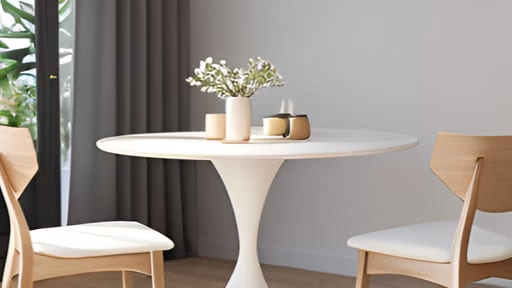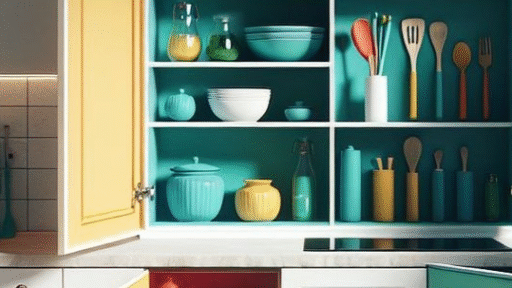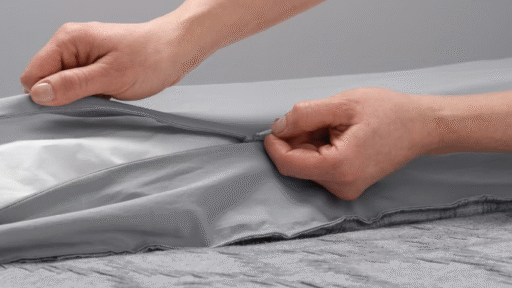With countless styles, materials, and designs available, choosing the perfect dining room chairs can feel overwhelming.
- 1. Importance of Dining Room Chairs
- 2. Assessing Your Dining Space: Size and Layout Considerations
- 3. Defining Your Style: Modern, Traditional and Eclectic
- 4. Comfort vs. Aesthetics: Finding the Right Balance
- 5. Key Materials for Dining Chairs: Pros and Cons
- 6. The Role of Cushion: Foam, Down, and other Options
- 7. Height Matters: Standard vs. Counter Height ChairsStandard Height Chairs
1. Importance of Dining Room Chairs
Well-designed chairs that prioritize comfort encourage guests to stay longer. They can foster an inviting environment that makes your home the go-to place for gatherings.
On the other hand, uncomfortable seating can lead to restless guests and a hurried evening.
Moreover, dining room chairs contribute significantly to your home’s aesthetic. They can be a statement piece that reflects your personal style.
In summary, understanding the importance of dining room chairs involves recognizing their role in comfort, style, and durability.
2. Assessing Your Dining Space: Size and Layout Considerations
A good rule of thumb is to allow at least 24 inches of space per person for comfortable seating. If your dining area is on the smaller side, consider options like armless chairs or those with a slim profile that can be tucked in easily when not in use.
Next, think about the layout.
- Is your dining area open or enclosed?
- Is it part of a larger living space?
The answer to these questions will influence not only the style of chairs you choose but also their material and color. For example, if your dining area flows into a living room, you may want to opt for chairs that complement the existing décor and color scheme. This would create a cohesive look throughout the space.
On the other hand, if your dining area is separate, you have more freedom to express your style with bold colors or unique designs.
Additionally, consider the traffic flow in your dining space. Ensure there’s enough room to move around the table without feeling cramped. Chairs that can easily slide in and out will make mealtimes more enjoyable and less of a hassle.
3. Defining Your Style: Modern, Traditional and Eclectic
Modern Style
If clean lines and sleek designs resonate with you, modern dining chairs may be your ideal choice.
Characterized by their minimalist approach, modern chairs often feature geometric shapes, neutral colors, and innovative materials such as metal or molded plastic. Look for chairs with unique silhouettes or bold colors to make a statement while ensuring comfort and functionality.
Incorporate modern chairs into your dining space to create a fresh, airy feel. This is perfect for both casual gatherings and formal dinners.
Traditional Style
For those who cherish classic design elements, traditional dining chairs are a timeless choice. Rich woods, ornate carvings, and upholstered seats are hallmarks of this style, evoking a sense of warmth and sophistication.
Think about elegant details like tufting or intricate patterns that can enhance the traditional aesthetic. These chairs work beautifully in spaces that feature rich textiles, warm color palettes, and heirloom pieces.
Eclectic Style
If your taste ventures into a more whimsical territory, consider embracing an eclectic style. This approach allows for a playful mix of colors, patterns, and materials, creating a dining area that is uniquely yours.
Pair vintage finds with contemporary pieces. You can mix and match different chair styles to create an inviting and dynamic environment. The key to nailing an eclectic look is to maintain a cohesive element. Color, texture, or theme—so that the space feels curated rather than chaotic.
4. Comfort vs. Aesthetics: Finding the Right Balance
To strike the perfect balance, start by evaluating how you use your dining space. If you frequently host dinner parties or family gatherings, prioritize comfort. Look for chairs with ergonomic designs that support:
- Good posture
- Cushioned seats
- Adequate back support
On the other hand, aesthetics play a crucial role in creating an inviting atmosphere. The style of your dining chairs should harmonize with your existing décor.
Consider the materials, colors, and shapes of the chairs. Sleek, contemporary designs may enhance a sophisticated dining space, while rustic wooden chairs can bring warmth and charm to a cozy setting.
One effective approach is to mix and match. Combine upholstered chairs with wooden or metal options to create visual interest while ensuring comfort across the board. Incorporating accent pillows can also add an extra layer of comfort and style, allowing you to easily switch up your dining room’s look based on the season or occasion.
5. Key Materials for Dining Chairs: Pros and Cons
Here’s a breakdown of some key materials to consider, along with their pros and cons:
a) Wood
Pros
– Timeless Appeal: Wooden chairs exude warmth and sophistication, fitting seamlessly into any decor style, from rustic to modern.
– Durability: Quality hardwood, like oak or maple, provides strength and resilience, making it a long-lasting choice.
– Versatility: Wood can be stained or painted to match your dining room’s color palette, offering customization options.
Cons:
– Maintenance: Wood requires regular care, such as polishing and occasional refinishing, to keep it looking its best.
– Weight: Solid wood chairs can be heavier, making them less convenient to move around.
b) Metal
Pros
– Modern Look: Metal chairs bring a sleek, industrial feel to your dining area, perfect for contemporary spaces.
– Sturdiness: Metal is exceptionally durable and resistant to wear, making it an ideal option for high-traffic dining settings.
– Easy to Clean: A simple wipe-down is often all that’s needed to maintain metal chairs, making them practical for everyday use.
Cons
Comfort Concerns: Without proper cushioning, metal chairs can be uncomfortable for long periods, so consider pairing them with cushions or upholstery.
Temperature Sensitivity: Metal can become hot or cold depending on the season, which may be uncomfortable for diners.
c) Upholstered
Pros:
Comfort: Upholstered chairs offer a plush seating experience, inviting guests to linger at the table.
Style Variety: Available in countless fabrics, colors, and patterns, upholstered chairs can elevate your dining decor to new heights.
Cons:
Stain Susceptibility: Fabric can be prone to stains and may require more effort to clean, particularly if you have children or pets.
Wear and Tear: Over time, upholstery can show signs of wear, necessitating recovery or replacement.
d) Plastic
Pros:
Affordability: Plastic chairs are typically budget-friendly and can be a smart choice for those seeking stylish options without breaking the bank.
Lightweight: Easy to move and rearrange, plastic chairs are great for flexible dining spaces.
Cons
Less Elegant: While modern designs exist, plastic may not offer the same level of sophistication as wood or upholstery.
Durability Issues: Depending on the quality, some plastic chairs may not hold up as well over time, leading to potential replacements sooner than expected.
6. The Role of Cushion: Foam, Down, and other Options
The right cushion can transform an ordinary chair into a luxurious throne.
a) Foam
Foam is the most common material used in chair cushions, and for good reason. It comes in various densities, allowing you to select a firmness that aligns with your comfort preferences.
High-density foam offers excellent support and durability, making it ideal for families or frequent entertainers, while lower-density foam provides a softer feel but may compress over time.
The beauty of foam is its versatility; it can be easily shaped and tailored to fit the design of your dining chairs, ensuring a seamless aesthetic.
b) Down and feather cushions
Down and feather cushions bring a touch of luxury to any dining room. These materials are incredibly soft and provide a plush seating experience. However, they do require a bit more maintenance, as they can flatten with use and may need regular fluffing to maintain their shape. If you’re looking for a cozy, inviting feel that encourages long dinners filled with laughter, down cushions might be the perfect choice. Just keep in mind that they can be more expensive than foam alternatives.
c) Gel-infused cushions
Gel-infused cushions are another innovative option worth considering. They combine the support of foam with the cooling properties of gel, making them an excellent choice for those who tend to feel warm while seated.
This type of cushioning is designed to provide comfort without compromising on temperature regulation, ensuring that your dining experience remains pleasant, even during long summer nights.
d) Memory Foam
Memory foam as a contemporary option, molds to your body’s shape, providing personalized support. This feature can be particularly beneficial for those with back issues or discomfort during prolonged sitting.
Memory foam chairs often return to their original shape when not in use, offering a balance of comfort and durability.
In choosing the right cushioning for your dining room chairs, think about how you envision using the space. Will it be a casual spot for quick meals or an elegant setting for formal gatherings?
Each cushioning material has its strengths and weaknesses, so weigh your priorities carefully to ensure that your dining area embodies both style and comfort.
7. Height Matters: Standard vs. Counter Height Chairs
Standard Height Chairs
They typically range from 17 to 19 inches in seat height. They are a go-to option for most dining tables, which usually stand around 28 to 30 inches tall. They offer a classic look and are ideal for traditional dining settings.
They provide a comfortable seating position that encourages relaxed dining experiences, allowing you to sit back and enjoy your meals with family and friends.
Additionally, standard chairs often come in a variety of styles, colors, and materials, making it easy to find the perfect match for your decor.
Counter Height Chairs
These are designed for elevated surfaces, typically measuring between 24 to 26 inches in seat height. They pair beautifully with counter-height tables or kitchen islands, creating an informal and modern dining atmosphere.
They often feature a more casual design, encouraging a laid-back dining experience that’s perfect for quick meals or social gatherings. The added height also enhances your sightlines, making conversations more engaging, especially in open-concept spaces.
When deciding between the two, consider the overall design of your dining area:
- If you have a traditional dining table, standard chairs might be the best fit
- If your home leans towards a contemporary or casual vibe, counter-height chairs can add a trendy touch
- Take into account the height of the table or counter when making your choice
- A good rule of thumb is to allow for about 10 to 12 inches of clearance between the seat of the chair and the underside of the table
Ultimately, the right height will not only enhance your dining experience but also ensure that your space feels cohesive and well-planned.



